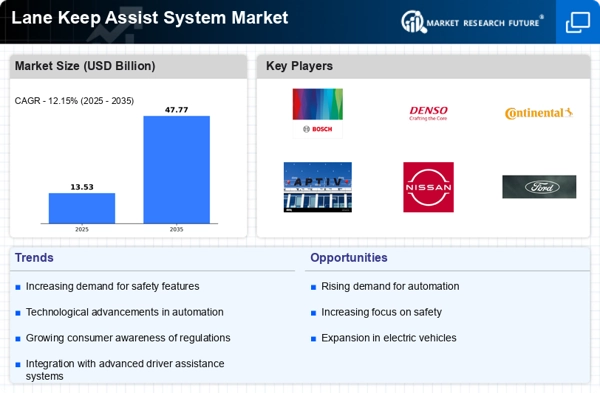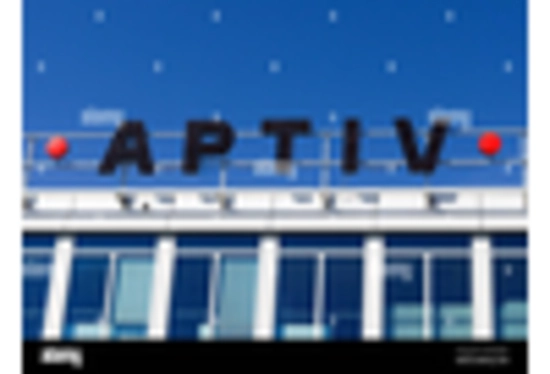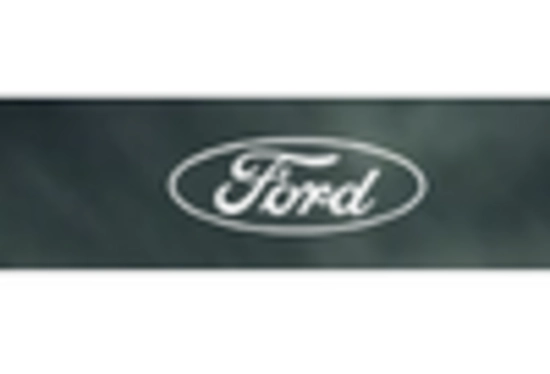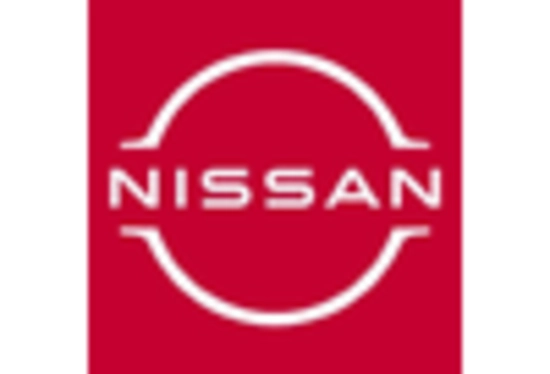Increased Regulatory Focus on Road Safety
The Lane Keep Assist System Market is also influenced by heightened regulatory focus on road safety. Governments worldwide are implementing stricter safety standards for vehicles, which include the mandatory installation of advanced driver assistance systems like lane keep assist. This regulatory push is aimed at reducing road accidents and fatalities, which have been a persistent concern. For instance, certain regions have set deadlines for manufacturers to comply with these regulations, thereby creating a sense of urgency in the market. As a result, automakers are compelled to adopt lane keep assist technologies to meet compliance requirements, leading to an increase in market penetration. The anticipated growth in the Lane Keep Assist System Market is expected to align with these regulatory trends, as more vehicles are equipped with these essential safety features.
Technological Advancements in Safety Features
The Lane Keep Assist System Market is experiencing a surge in demand due to rapid technological advancements in automotive safety features. Innovations such as improved sensors, cameras, and artificial intelligence are enhancing the effectiveness of lane keep assist systems. These technologies enable vehicles to detect lane markings more accurately and respond to road conditions in real-time. As a result, the market is projected to grow significantly, with estimates suggesting a compound annual growth rate of over 10% in the coming years. This growth is driven by consumer preferences for vehicles equipped with advanced safety features, which are increasingly seen as essential rather than optional. Consequently, manufacturers are investing heavily in research and development to integrate these technologies into their vehicles, thereby propelling the Lane Keep Assist System Market forward.
Shift Towards Electric and Autonomous Vehicles
The Lane Keep Assist System Market is poised for growth due to the ongoing shift towards electric and autonomous vehicles. As the automotive industry transitions to more sustainable and technologically advanced vehicles, lane keep assist systems are becoming integral components of these innovations. Electric vehicles, which often come equipped with advanced driver assistance systems, are gaining popularity among environmentally conscious consumers. Furthermore, the development of autonomous vehicles necessitates the incorporation of lane keep assist technologies to ensure safe navigation. Market forecasts suggest that the increasing adoption of electric and autonomous vehicles will drive demand for lane keep assist systems, thereby expanding the Lane Keep Assist System Market. This trend indicates a future where lane keep assist systems are not just supplementary features but essential elements of modern vehicle design.
Consumer Demand for Enhanced Driving Experience
The Lane Keep Assist System Market is significantly driven by consumer demand for an enhanced driving experience. As consumers become more aware of the benefits of advanced driver assistance systems, there is a growing expectation for vehicles to offer features that improve comfort and safety. Lane keep assist systems not only help in maintaining lane discipline but also reduce driver fatigue during long journeys. Market data indicates that vehicles equipped with such systems are increasingly favored by consumers, leading to a notable rise in sales. This trend is particularly evident among younger drivers who prioritize technology and safety in their vehicle choices. Consequently, automakers are responding to this demand by integrating lane keep assist systems into a wider range of models, thereby expanding the Lane Keep Assist System Market.
Rising Awareness of Road Safety and Accident Prevention
The Lane Keep Assist System Market is benefiting from a rising awareness of road safety and accident prevention among consumers and policymakers alike. As statistics reveal the alarming rates of road accidents, there is a growing emphasis on technologies that can mitigate these risks. Lane keep assist systems play a crucial role in preventing unintentional lane departures, which are a common cause of accidents. This awareness is prompting consumers to seek vehicles equipped with such safety features, thereby driving market growth. Additionally, educational campaigns and advocacy for safer driving practices are further reinforcing the importance of lane keep assist technologies. As a result, the Lane Keep Assist System Market is likely to see sustained growth as more individuals recognize the value of investing in vehicles that prioritize safety.


















Leave a Comment